Industry news
China’s Fisheries Policy Makes Belated Shift To Sustainability – Analysis
Datetime:2023-04-11In response to growing demand for aquatic products, China introduced its 14th Five-Year National Fisheries Development Plan in 2022. Under the plan, the 2025 target for the country’s aquatic production is 69 million tonnes, suggesting that its enormous fishing industry will continue to expand.
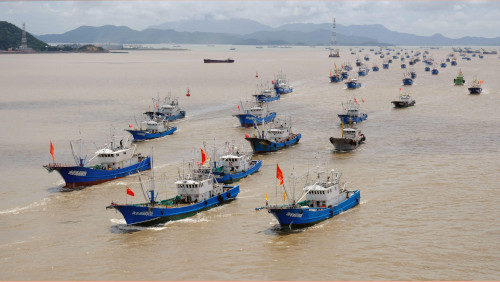
Image: Zuo Xunyong / Alamy / China Dialogue Ocean
But underneath the general trend of continuous expansion, China’s fishing industry has been undergoing major structural shifts. These shifts will likely be further encouraged by new policies introduced by the government, creating far-reaching consequences for regional and global governance of fisheries.
Limiting wild catch and reducing vessel numbers have been at the heart of China’s fisheries policy since 2016, when provinces were told how many vessels to take off the water. By 2020, 40,000 working vessels had been taken off Chinese coastal waters, while the total catch was reduced to 9.5 million tonnes. The limit for marine catches in Chinese waters will remain at 10 million tonnes, and the number of fishing vessels will be further reduced under the 2022 plan.
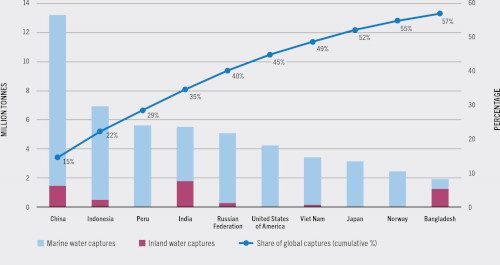
Main world capture producers 2020. Source FAO.
Meanwhile, China has started piloting systems that determine total allowable catches and allocate these across vessels. China aims to stabilise its total distance water fishing output at 2.3 million tonnes, the same level as 2020, while also strictly controlling the size of its distant water fishing fleet.
The decline in the number of fishing vessels has also been accompanied by fishing workforce shrinking. In 2021, China’s fishing workshops dropped to 11.8 million, a decrease from 14.1 million in 2015. In addition, with the phaseout of fishing fuel subsidies, which had been a major contributor to the phenomenal expansion of China’s fishing fleet and overfishing by Chinese fishing vessels, the decline in China’s marine catch will likely be irreversible.
Following the rapid development of agriculture in China, the country became the world’s leading aquaculture producer in 1989 and remains so today. In recent years, factors like industrialisation, urbanisation, and stricter environmental policies have resulted in a reduction in traditional fish farming areas. In response, marine ranching is poised to play an even bigger role in China’s seafood supplies.
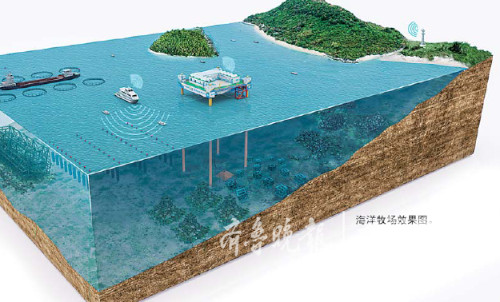
Photo: Red Binzhou
Marine ranching is a type of aquaculture developed in the 1970s which involves placing artificial reefs, including cement frames and old iron boats, at fixed sites in an enclosed section of ocean or in open sea to attract fish, shrimps, crabs, shellfish and other marine life to forage, rest and reproduce.
In recent years, the development of marine ranching has received strong government support. The National Mariculture Development Plan (2017–2025) published by the Ministry of Agriculture and Rural Affairs stated that China planned to build 178 national-level demonstration marine ranches, later raised to 200 in 2022. In a speech in March 2023, Chinese President Xi Jinping stressed that the expansion of marine ranching was necessary to help solve China’s food security concerns.
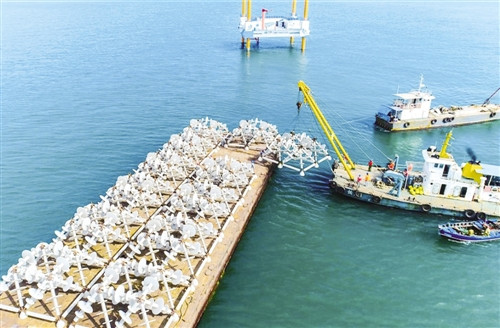
Photo: Sina
In recent years, China has experienced a major transition in its fishery trade, moving from a leading processor of fish raw material for re-export into a country that increasingly sources high-quality aquatic products for domestic consumption. Although China has long been the world’s top fish exporter, most exports are actually imported and then processed and re-exported to other countries.
But rising domestic demand for high-quality seafood brought on by China’s expanding middle class and policy measures taken by the central government to facilitate fishing imports have resulted in soaring imports and declining re-exports. In 2022, for the first time in decades, China registered a fishery trade deficit, with fishery imports totalling US$23.7 billion and fishery exports during the same period totalling US$23 billion.
Given China’s limited natural resources, Beijing has always prioritised the development of science and technology as a potential solution to managing its food supplies.
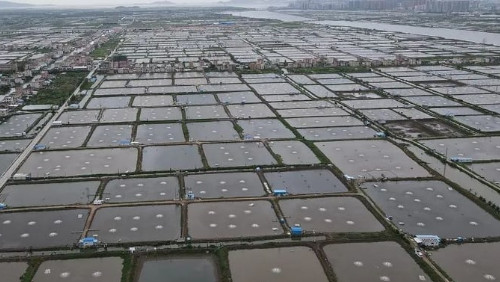
Photo: Freewechat
Currently, China’s aquaculture cultivation is dependent on ‘trash fish’ (fish too small for human consumption) for feed. To address this issue, Chinese researchers are searching for replacements. In an encouraging sign, trials of compound feed as an alternative to trash fish have achieved a substitution rate of 77 per cent.
At the same time, high-tech fish farming is being encouraged through the development of ‘smart’ fish farming, where new technologies including artificial intelligence and robotics are used.
These structural changes could reduce fishing conflicts in disputed waters and help restore depleted fish stocks. China’s decision to replace its infamous fishing fuel subsidies with fishery stewardship subsidies was pivotal to the success of World Trade Organisation negotiations on fisheries subsidies. In January 2023, Ministry of Commerce officials stated that they expected to approve the agreement in 2023, demonstrating a significant policy shift. While these changes could help to reduce illegal, unreported and unregulated fishing, regulation and governance frameworks are still needed.
With China’s decreasing reliance on marine catch fishery and its emergence as a top importer and as a major fishing tech power, there will likely be less fishery-related competition and more collaboration opportunities in the region. In recent years, China and various Southeast Asian countries have formed cooperation agreements relating to fishery infrastructure development, fishing farming, processing and fishery science and technology.
Given the country’s enormous strides in advancing its scientific, technological and innovation capacity, its recent initiatives in fish breeding, alternative fish feed and high-tech fish farming could change not just China’s fishery sector but also the global fishing industry.
By Hongzhou Zhang y Genevieve Donnellon-May | Eurasia Review

